In high school, I listened to Heavy Metal music and also played Dungeons and Dragons. Back in those days, I hung out at the mall with friends and girlfriends. The mall had this one poster shop and I immediately fell in love with a specific painting.
I’d been doing physical labor on the side so I always had cash on me. I’m surprised nowadays that kids don’t go door to door asking to mow people’s lawns or pester people about possible work they could do for them. Like cleaning the gutters. Or even raking their leaves. I don’t know about you, but I loved having money as a kid.
Anyways, right on the spot, I bought that poster. I took it home and hung it up next to all my Heavy Metal posters. I thought it fit in well thematically.
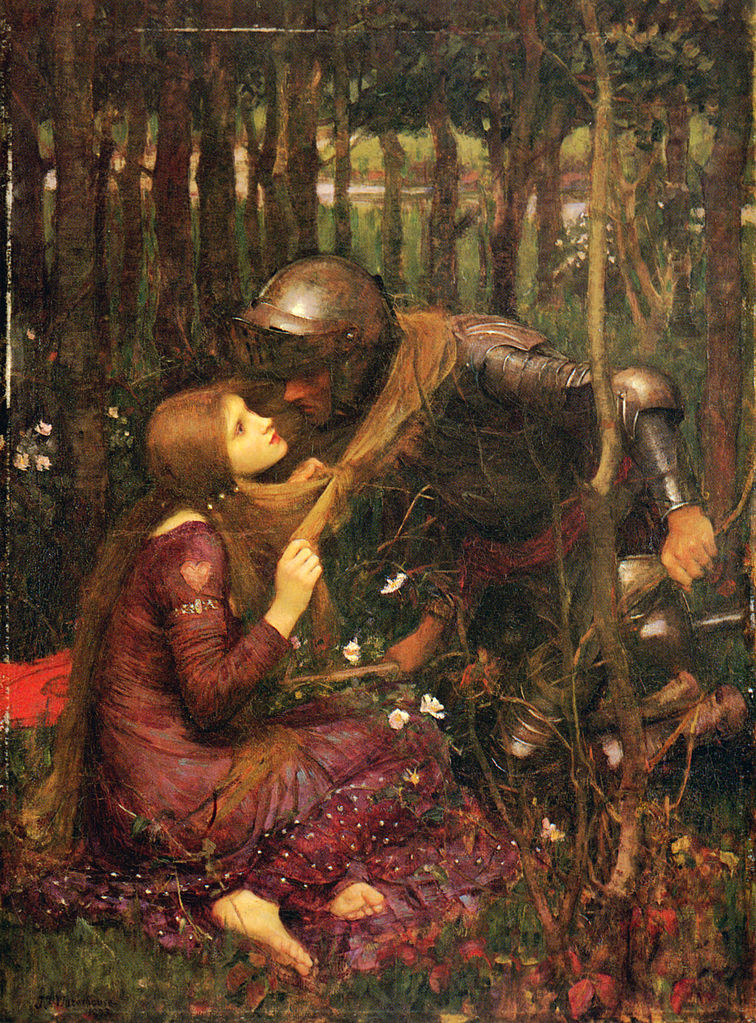
Cultured kid
No. I didn’t know who John William Waterhouse or the Pre-Raphaelite Brotherhood were. However even as a kid, I liked Tchaikovsky, Brahms, and Beethoven. (As an adult that changed to Tchaikovsky, Beethoven, and Brahms).
So years later, I started studying Western art and Western lit. I knew what I liked. I knew what I didn’t like.
Modernism – you can have it. Looks more like something some pretentious jerk would do and think he’s better than anyone else because they didn’t “get it.”
Now the Pre-Raphaelites, I liked. A lot.
I also liked American pinup artists. More on them another day.
About John William Waterhouse
John William Waterhouse was late to the party. The Pre-Raphaelites had already broken up. But as a more Academic artist, he later fell in love with the Pre-Raphaelites’ works and adopted that style.
I’ll skip over his older style. It’s excellent. But I think his later style has way more emotion.
Waterhouse was born in Rome in 1849 but moved to England as a small child. His parents were already painters, so he grew up in an artistic household. He grew up sketching paintings in London’s great museums. In 1871, he entered the Royal Academy of Art.
I’m not going to do a formal biography. You can get that from anywhere. Rather, I’m going to focus on his works from his Pre-Raphaelite period.
What is the Pre-Raphaelite style?
The name “Pre-Raphaelite Brotherhood” came from the great artist Raphael. Note the “pre” as they emphasized before Raphael. They hated Mannerism with a passion.
Their four doctrines were the following:
- to have genuine ideas to express;
- to study Nature attentively, so as to know how to express them;
- to sympathise with what is direct and serious and heartfelt in previous art,
- to the exclusion of what is conventional and self-parading and learned by rote; and most indispensable of all, to produce thoroughly good pictures and statues.
Now to them, Classicism wasn’t bad. It was just a different movement, based on the Classical world. The Pre-Raphaelites still picked up some of the characters and themes from Classicism. Which makes the differentiation confusing to the average art lover.
But let’s go there because I think it’s a perfect opportunity to see the difference between the Pre-Raphaelites and your day-to-day academic painter. Let’s say a Pre-Raphaelite and an academic painter both have to paint Aphrodite. The academic painter would paint Aphrodite in a stereotypical posed style with a posed background. The Pre-Raphaelite would make it look natural, or real, like you were right there seeing it happen. That painting would feel more alive.
Waterhouse’s style vs the other Pre-Raphaelites
Where Waterhouse differentiates from the others is in his Medievalism. That’s actually the Waterhouse I’ve come to know and love.
For the record, not all the Pre-Raphaelites went that route. Of the group, I favor the Medievalists. Personal taste.
Several of the Pre-Raphaelites did go the Medieval route. Dante Gabriel Rossetti and Edward Burne-Jones started that branch. Waterhouse followed in their footsteps a generation later. I happen to love all three of their styles.
Medieval and fantasy characters
This is the John William Waterhouse that made me a fan. The Pre-Raphaelites often had Christian themes. Like I mentioned, some had Medieval themes. And some took a fantasy direction. They didn’t have concrete rules for themes, other than respecting nature, having a solid idea to portray, and being pretty fucking good as an artist. You couldn’t slap the label on if you were a hack.
Waterhouse is my favorite for the direction he took. I love his themes.
I first heard about the Lady of Shalott from Loreena McKennitt, of whom I’m a huge fan. When I saw the painting, I only saw a beautiful redhead as I was a kid. I didn’t know the meaning of it.
Alfred, Lord Tennyson wrote the poem based on one of the Arthurian characters. Several of the Pre-Raphaelites were fans of Alfred, Lord Tennyson.
Another thing I want to mention. Waterhouse is not only not one of the originals Pre-Raphaelites. He’s an entirely new generation adopting that style. He got into the style in the 1880s, long after the originals unofficially dissolved.
Also note that I argue Pre-Raphaelites were a subset of Romanticism. Some art historians agree with me and some don’t. Art historians are always arguing over semantics.
Since they loved nature, revered beauty and awe, and glorified Medievalism, they definitely fit within Romanticism. Those are some of the biggest tenets of Romanticism.
Anyways, let’s look at some of his fantasy characters. If you played any fantasy RPG, you’ll immediately recognize these creatures.
If today, you know the difference between a Naiad, a Siren, and a Mermaid, chances are, you’re a fantasy gamer. Or you watch a lot of anime.
Ophelia
Ophelia is a Shakespearean character and also a recurring character amongst the Pre-Raphaelites. Lizzie Siddal modeled for John Everett Millais back in 1852. Waterhouse painted this character three times.
Ophelia is a tragic heroine who you know is going to die when reading Hamlet. She’s fierce, independent, and quite intelligent, but there’s a sadness to her as we see her fate coming.
Or maybe we don’t. Maybe I’ve read too much into her. Regardless, those of us who love Shakespeare find her one of the more fascinating characters.
Obviously, so did the Pre-Raphaelites. Like I just said, Millais painted her back in 1852 using a lady I’m obsessed with, Lizzie Siddal, as his model. Dante Gabriel Rossetti used Ophelia as a subject for his art as well. A generation later, so did Waterhouse.
I liked all three of Waterhouse’s Ophelia paintings, but prefer his second for her beauty and the third for her emotion. The third, she looks like she’s about to lose it. Let me know which one you prefer.
Time frame
John William Waterhouse was born in 1849, when the Pre-Raphaelites barely started. So keep in mind, he adopted the style a generation after. He was far from one of the originals.
In fact, Waterhouse didn’t even paint in this style until the 1880s. So he was a Pre-Raphaelite from the 1880s until his death in 1917.
The Lady of Shalott
Do you know the story of the Lady of Shalott? It’s one of Loreena McKennitt’s most epic songs from her album The Visit, one of my favorites of hers.
The Lady of Shalott’s an Arthurian character, created by Alfred, Lord Tennyson in 1832. Some of the Pre-Raphaelites were big fans of Alfred, Lord Tennyson’s poetry.
Anyways, she’s a young noble woman imprisoned in a tower, another tragic character. She also dies tragically.
She’s told that if she gazes at Sir Lancelot, she’d be cursed. Some claim it’s a metaphor for suicide. Some say she’s defiant.
The poem explicitly states that she knows not what the curse may be. So I’m not sure where people get the suicide claim from.
Towards the end of the poem, she takes off in a boat towards Lancelot after seeing how beautiful he is. She of course dies on the route, but not before Lancelot and others see just how beautiful she herself is.
Waterhouse obviously saw her as a great tragic character to paint as he painted her three times.
Hylas and the Nymphs and 2018 British Censorship
In January 2018, the Manchester Art Gallery removed this gorgeous painting because it was offensive. Think about this for a second. You know how the Victorians were supposed to be sexually oppressed? Yet, what is normal to them is now offensive by today’s standards? Talk about sexually oppressed!
I initially wrote up a long rant about this. However, it was so laden with profanities that I decided to remove it. I value freedom and beauty above all else and have an absolute hatred of those who would attempt to ban either. We’ll just keep it at that.
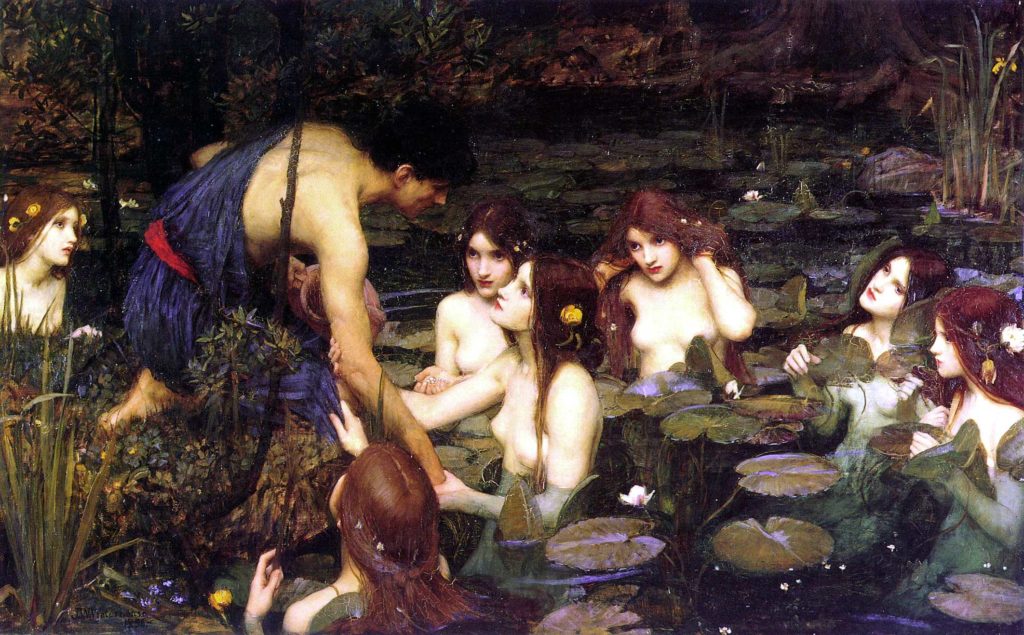

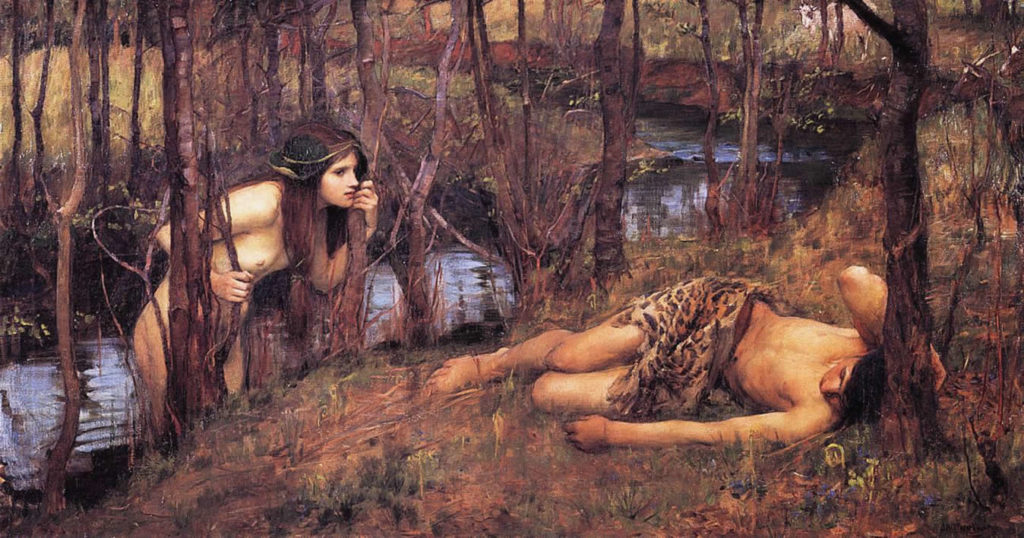

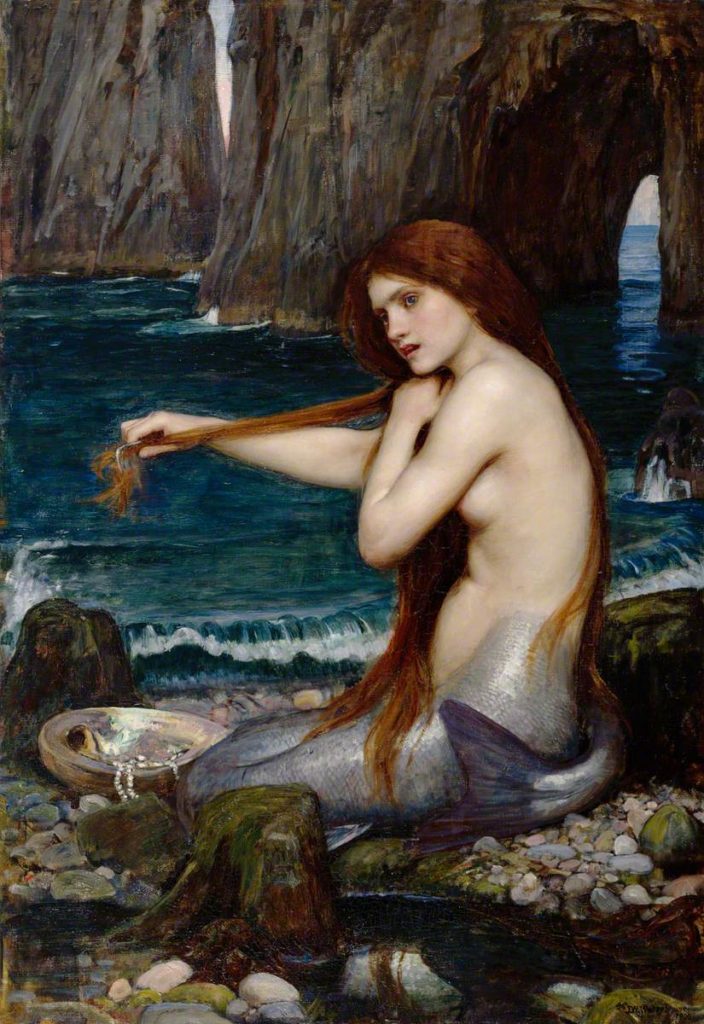
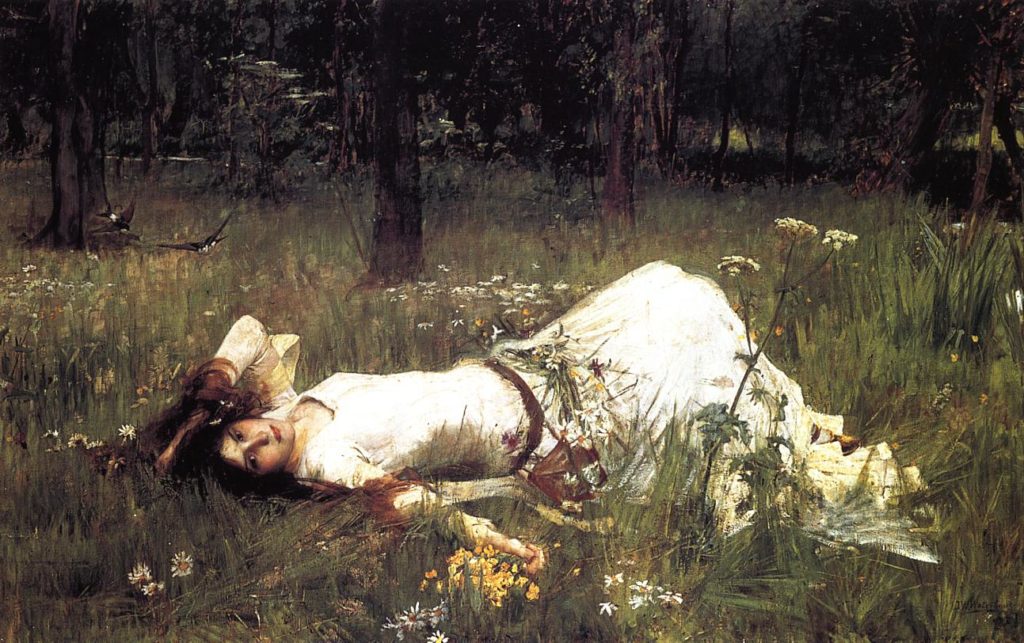
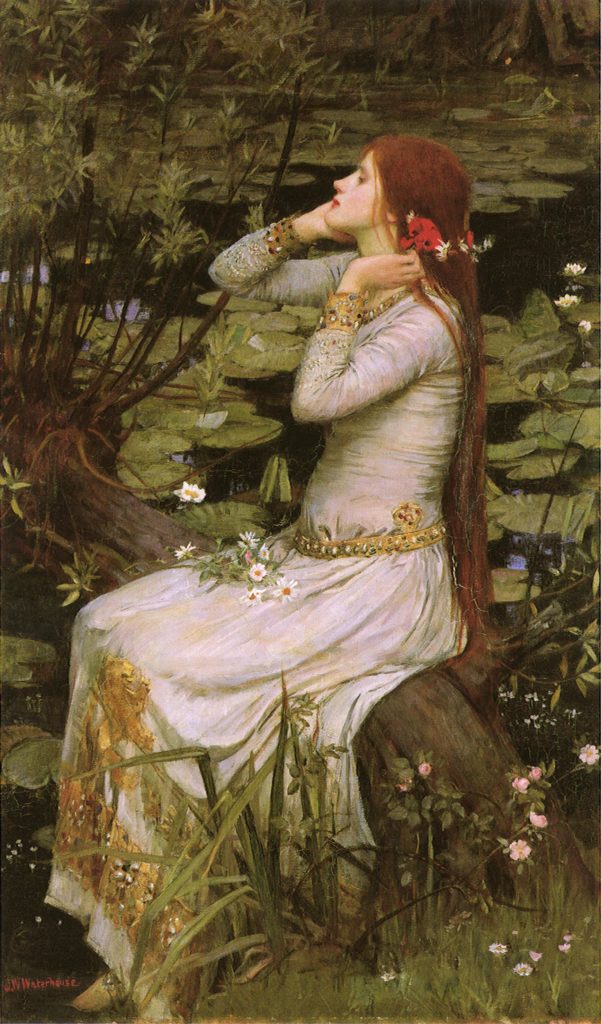
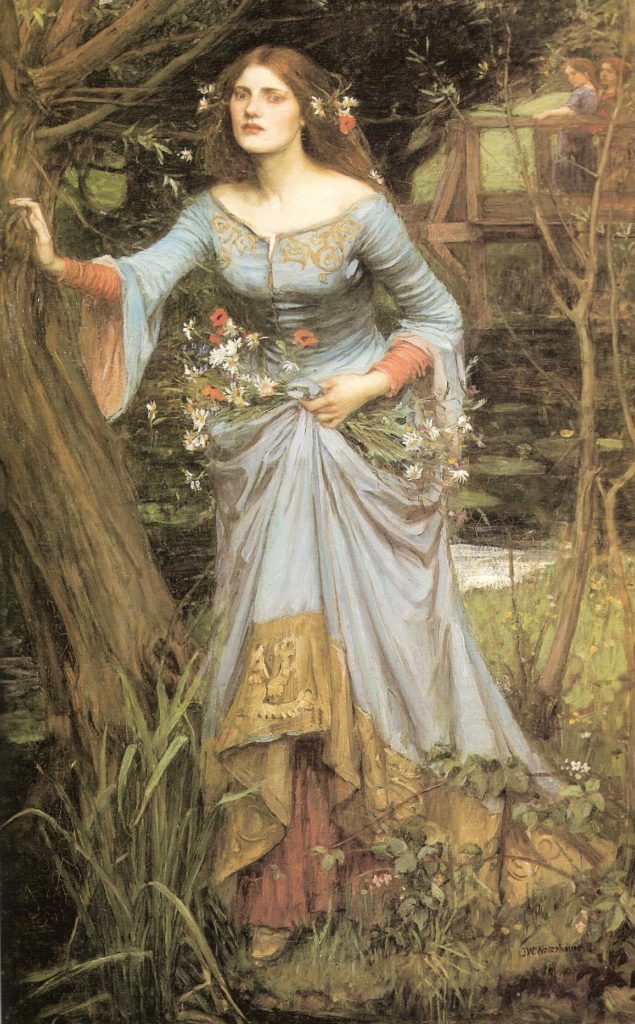
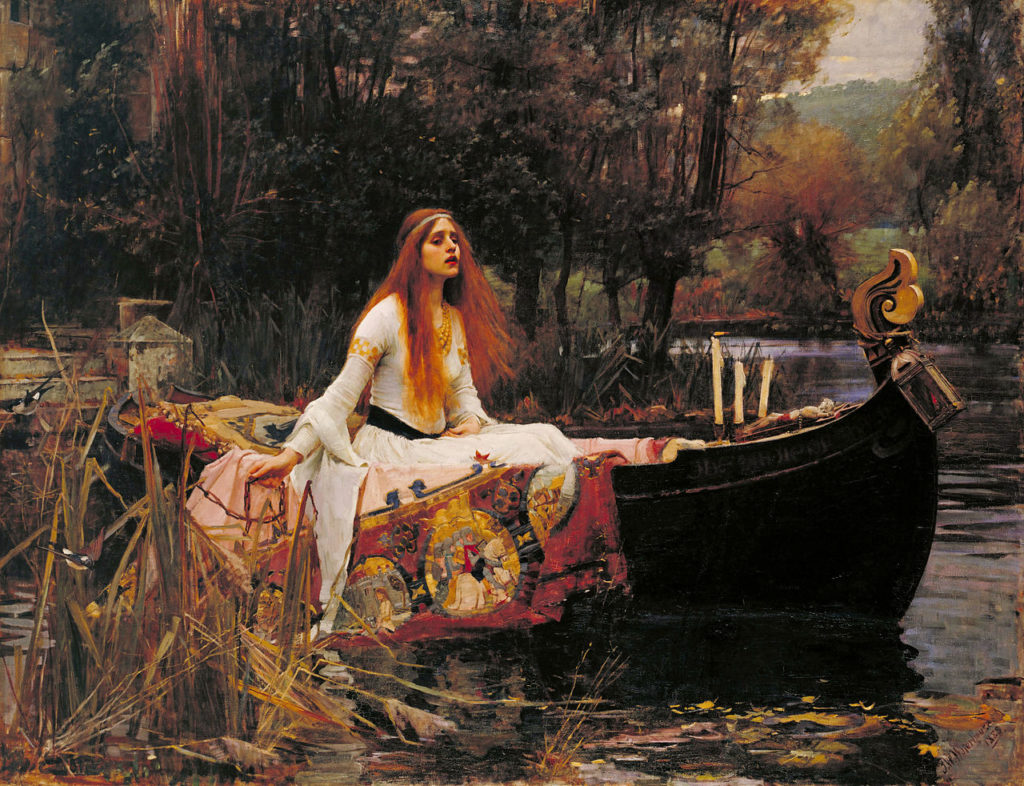
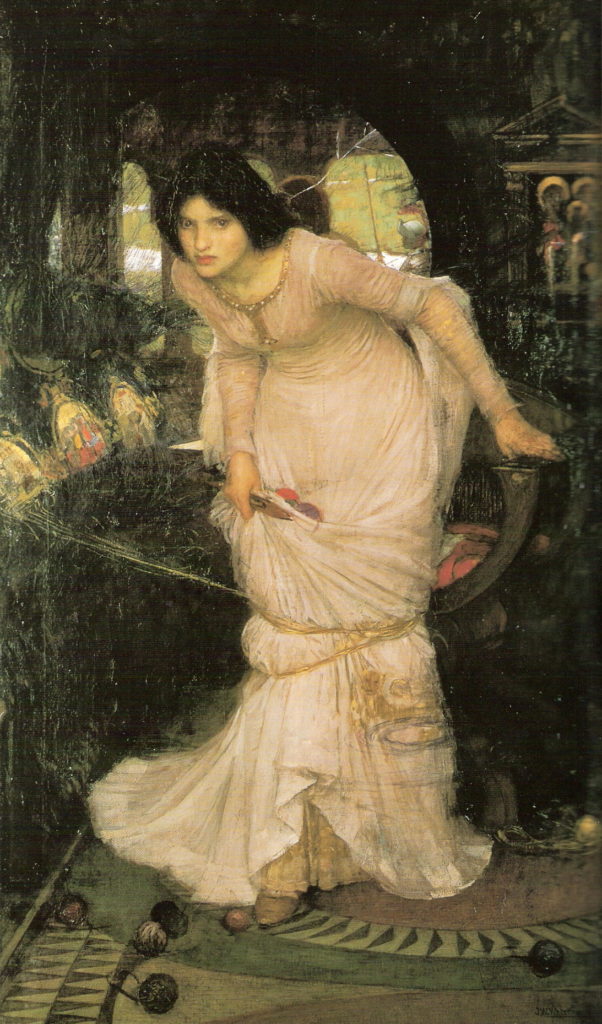

Very informative, Roman (my wife’s maiden name). I will do some more of my own research. Thanks for turning me on to a new artist (new to me).
You’re welcome Mike. I hope you enjoy Waterhouse. He’s definitely one of my favorites.
And what a cool maiden name. 😉
I’ve really enjoyed reading your post. I love the Pre-Raphaelites especially Waterhouse.
You have good taste. I like them all too, but like you, especially Waterhouse
Great write up. Thanks for sharing those.
Thanks!